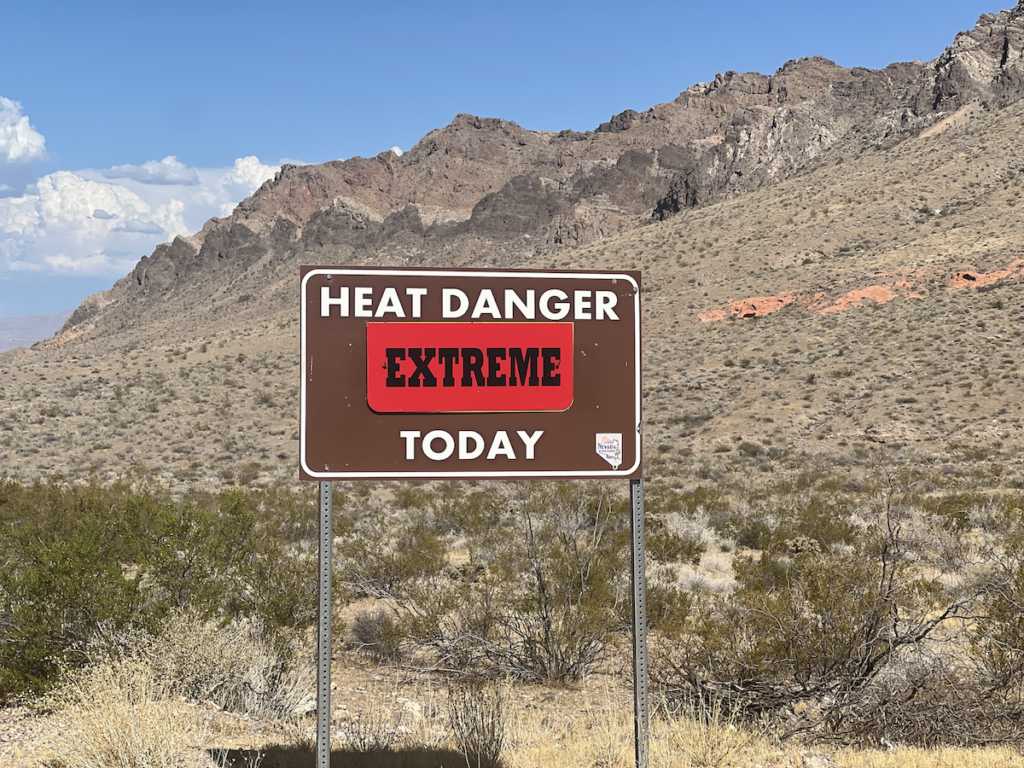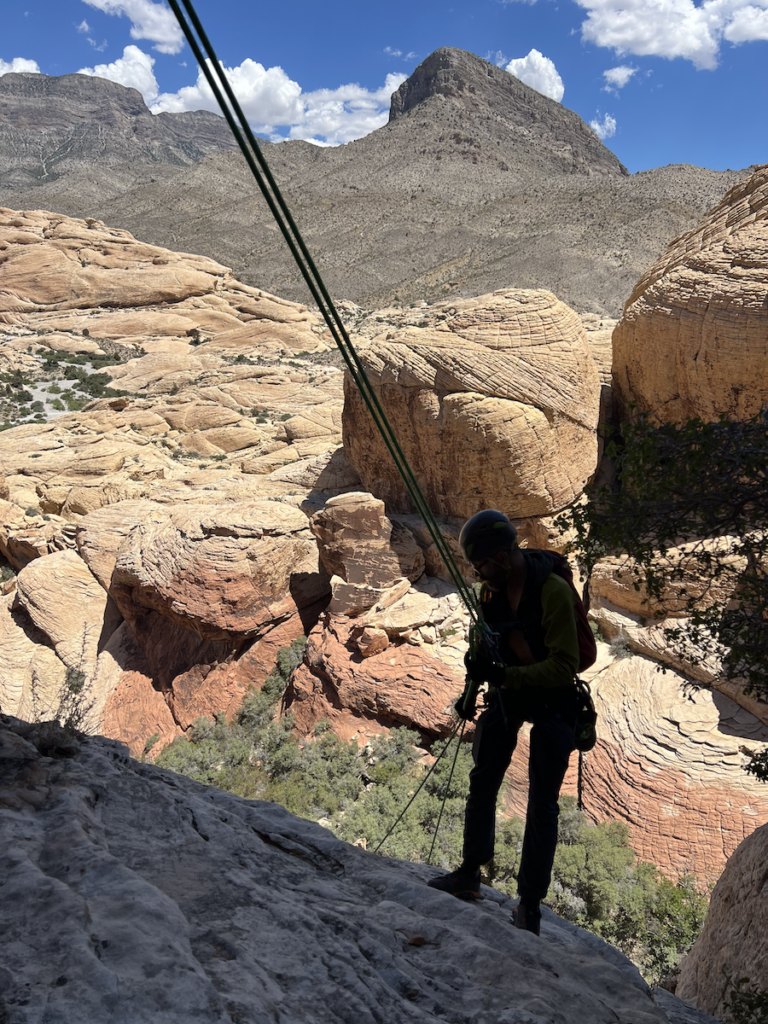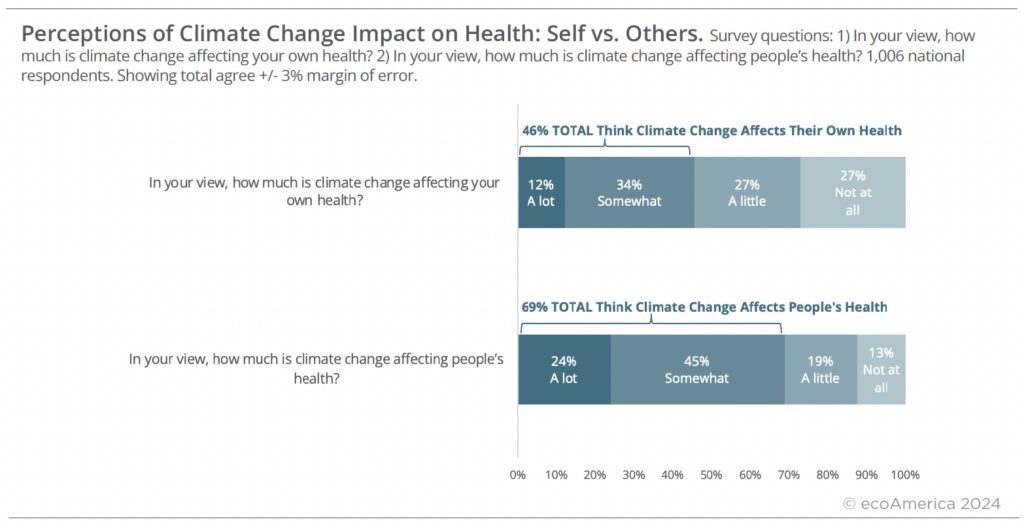Climate Health Risks and “Type II Fun”
It’s hot out there. Really hot. Records are being set and people are falling ill. Extreme heat emergencies don’t leave behind graphic scenes of destruction the way that hurricanes and wildfires do, but they are arguably the most severe climate impact in terms of risk to human health. I know this in principle, but my actions sometimes reveal that I don’t always heed that knowledge with caution.
For example, I recently extended a work trip to Nevada to go canyoning and climbing, despite the 109 degree heat. Three nights sleeping on the scorched desert ground left me feeling like a roasted potato! In the climbing community, it’s what we call “Type II Fun” – that is, fun that doesn’t feel like fun until after it’s over. Marathon runners can relate.


Gradually, I’ve begun to accept how foolhardy my lack of caution regarding heat may actually be. My attitude towards the heat and my own health in the face of climate change, however, is not that uncommon. Some of ecoAmerica’s recent research reveals a gap between people’s perception of climate’s impact on their own health versus its impact on the health of others.

A significant majority of people in the United States (70%) know that climate change impacts health, but less than half say it’s affecting their health (46%). We tend to see climate health risks as being greater for others. There’s a two-to-one margin, for example, between those who say it affects their health “a lot” versus those who say the same about others (12% self vs. 24% others).
The tendency to perceive lesser personal climate health risk may contribute to reduced concern about climate change overall. So how might we help people better see themselves in these data? My own disregard for heat stems from a (rather misguided) sense that it’s mainly the elderly and infirm that need to exercise caution in heat; “perhaps someday I’ll need to be careful, but I’m mostly ok right now”.
Indeed, it’s the 45-54 age group that reports the lowest awareness of climate’s impact on health. It’s also this group, however, that will be most vulnerable when heat projections are expected to be the most extreme. Given an aging population and rising temperatures, “an extra 250 million seniors could be at risk of dangerous heat by 2050”.
It’s never effective to try to scare people into climate action. But helping those who are in their 40’s and 50’s see that taking action today will secure their personal health when they enter the high risk age category could personalize the issue and motivate action. And, importantly, also reinforce the fact that it’s not too late to start taking action now. These attitudes towards heat, health, and age are worth taking into consideration when framing the way you talk about climate change and what we can do about it.
About the Authors
Brett Matulis, Communities Program Director, ecoAmerica
Additional Resources
American Climate Leadership Awards 2024
American Climate Leadership Awards High School Students 2024
Mental Health and Our Changing Climate: Children and Youth Report 2023
